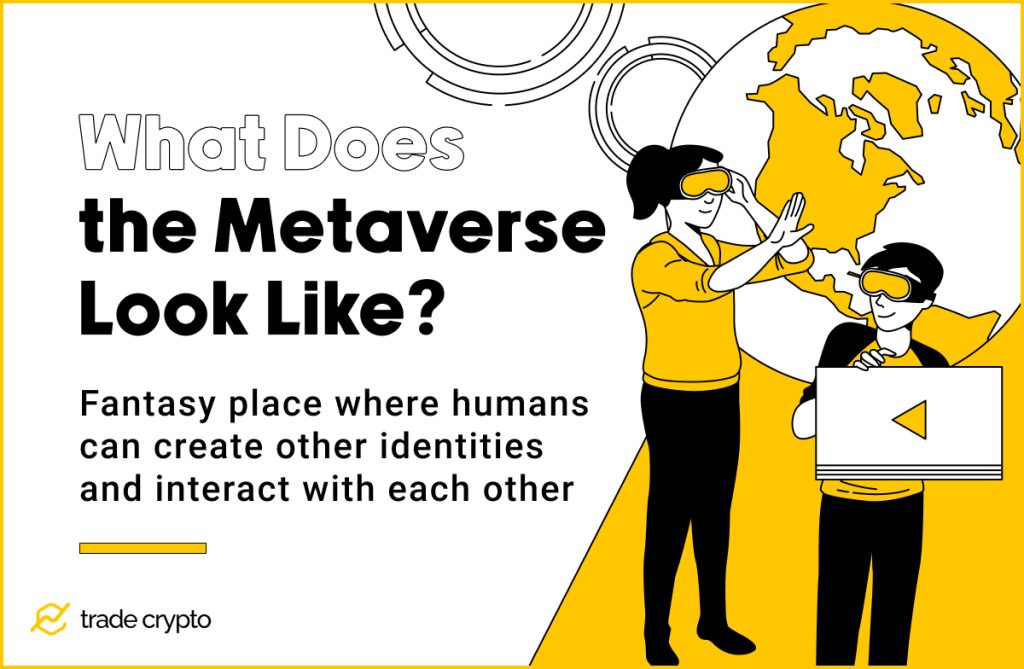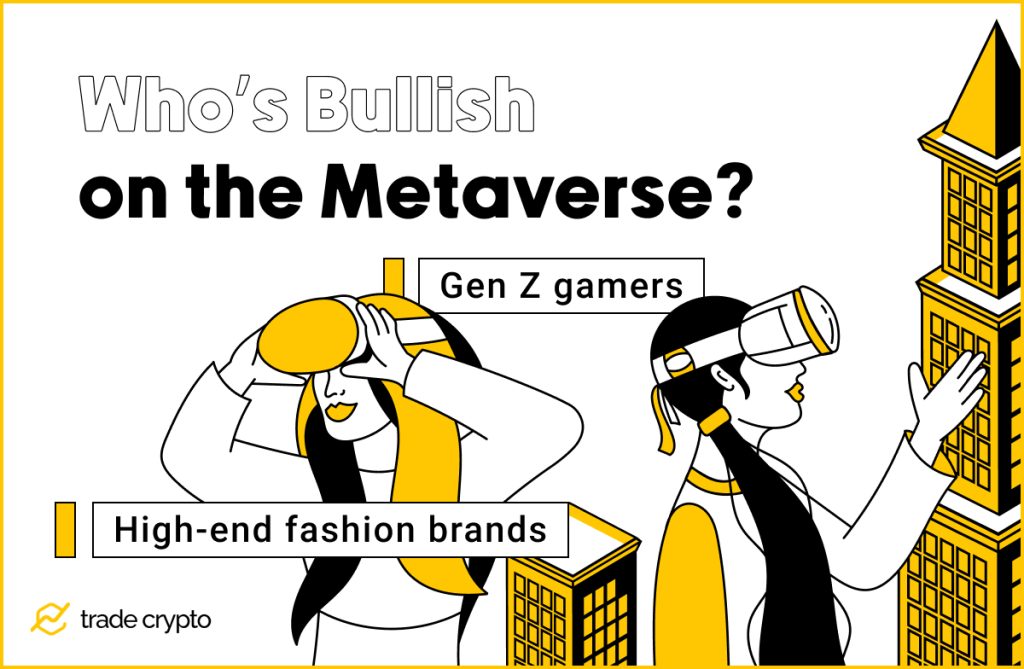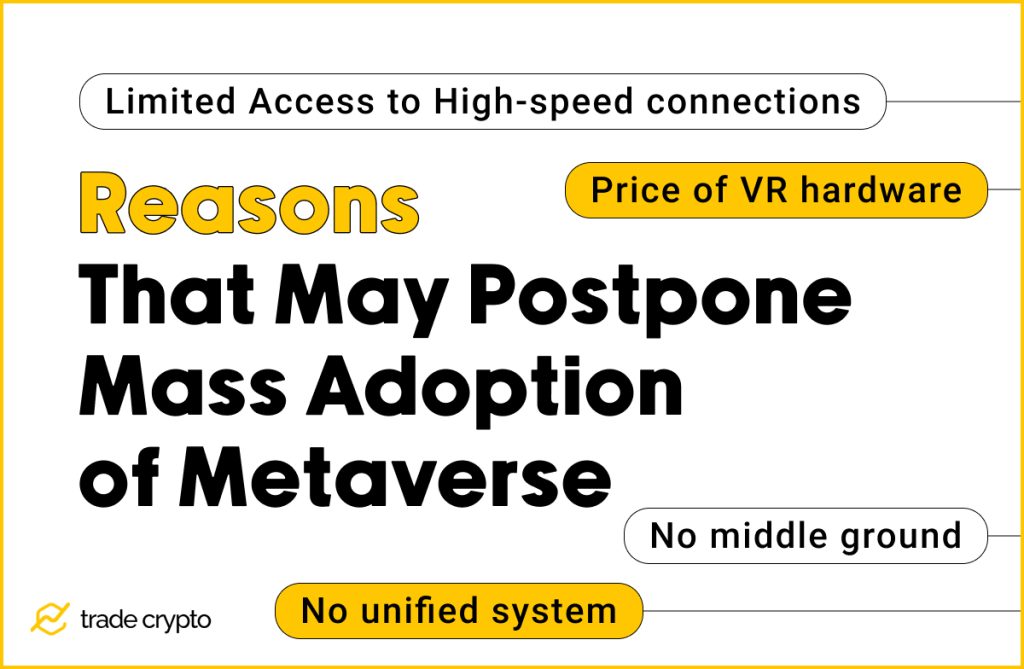Table of Contents
In 2021, Mark Zuckerberg changed the name of his company, Facebook, to Meta as part of a colossal rebranding campaign. From that moment on, the interest in augmented reality and the future of the internet has been spreading like wildfire. Everyone is talking about these new technologies and billions of dollars are invested in promoting the steer toward the metaverse.
It goes without saying that major changes are imminent. 54% of experts believe that billion people globally will immerse in the metaverse by 2030-40, while 46% believe that the metaverse needs more refining to become a true fully-immersive experience.
The question is just when it will happen, rather than if we would ever get to taste the rich foam of the Shangrila Farms coffee while sitting in some futuristic Chinese cafe, or traveling to ancient Greece without having to leave our homes but by simply wearing a VR headset.
So, how far can the metaverse go and what’s the future of the metaverse? Will we join the metaverse for educational or work obligations only, or will we spend more than 12 hours a day jacked in?
What Does the Metaverse Look Like?

Neal Stephenson coined the term metaverse 20 years ago. However, it entered common usage only after the Covid19 pandemic. XR or extended reality is an acronym that describes the metaverse best since it combines all kinds of reality – augmented, mixed, and virtual.
Metaverse is a fantasy place where humans can create other identities and interact with each other in a way that was once possible only in science fiction. However, to be able to enter virtual spaces, we should wear virtual reality goggles such as Meta Oculus Quest.
Online avatars and immersive worlds are nothing new. Many entertainment companies have already created virtual worlds, such as Roblox and Grand Theft Auto.
Right now, some big players are creating virtual homes, workspaces, and all kinds of experiences for users of all ages and support all types of social interactions (chilling with friends, having business meetings) that go far beyond just gaming. So, simply put, the metaverse and digital technologies are meant to unleash socioeconomic change.
Metaverse as an Alternative to the Real World

From today’s perspective, the metaverse seems to provide something like a digital escape, an alternative to everyday life, a separation from the physical world and our physical selves.
Just imagine being able to enjoy your post-work routines in the virtual world without having to commute or dress up. You can easily create your digital twin, interact with friends socially, watch movies, or play basketball hassle-free, all thanks to the metaverse technology.
Web3 advocates see the metaverse as a chance to decentralize control, experience, and monetization. They believe that big tech companies are currently holding too much power and influence, while the metaverse is the moment when all of the above-listed benefits are given to the hands of citizens (users) and content creators. As an example of monetization, the metaverse is encouraging the digital economy and allowing individuals to buy, but also to make and sell items to earn some extra income.
Still, despite the fact that the metaverse can improve the quality of our everyday life and make it more entertaining, virtual reality is still not developed enough that it could replace most or all of its aspects.
Shaping the Future of Work
Work from home had become popular several years ago but the Covid pandemic made it an obligation rather than a choice and it intensified tech advancements big time. However, WHF stayed for the good, post-pandemic as well.
Thus, many companies have introduced VR (virtual reality) technologies as a perfect way to cut commute time and increase productivity and efficiency at the same time. The concept of digital world offices perfectly matches two of the main employee preferences – flexibility and remote work options.
According to surveys, tech workers are mostly interested in virtual space and VR technology and don’t mind using digital avatars and going to virtual meetings. Besides, using VR equipment has been the norm for surgeons, pilots, and astronauts, just to name a few professions, and this experience is about to translate to other types of work.
Virtual meetings provide that face-to-face communication and encourage higher levels of engagement compared to regular remote environments (a.k.a. Zoom meetings). This allows better connectivity with teammates, simplifies planning team activities and company events, and reduces the isolation that numerous remote workers can experience in digital space.
Not only adults but kids as well got a chance to study at home, at their own pace, which also came as a blessing to all stay-at-home moms and single parents.
Who’s Bullish on the Metaverse?

Worldwide companies have already become cognizant of the vast opportunities that owning a virtual land can offer. They have plans on either renting virtual lands or selling them at a much higher price once more people get hooked on this idea.
High-end fashion brands (Ralph Lauren, Birkin, Dior, Gucci, Hermes, and Balenciaga) are hastily preparing lines of virtual fashion (dresses, down jackets, and beanies, just to name a few) and other virtual goods for Gen Z gamers that will be sold as NFTs (non-fungible tokens) and used in games. RTFKT, a digital sneaker company, was acquired by Nike. So far, the company has generated over $3 million in profit by selling digital shoes.
Seoul Metropolitan Government announced plans to recreate the city’s most popular tourist attractions in the metaverse and launch the platform at the beginning of 2023. Going fully meta can have a major impact on Seoul’s municipal administration and the city aims to establish a metaverse environment for a myriad of aspects besides tourism – education, culture, and economy.
Reasons That May Postpone Mass Adoption of Metaverse

The reality is a bit different and less grandiose than what we’ve been told. Although top tech gurus are doing their best to make metaverse experiences fully immersive and some aspects are already live, metaverse platforms are still not interconnected.
Indeed, Fornite or Alyx players spend their whole days in virtual worlds but, wanting to switch to another platform, they’d have to log out first and then log in to another. There’s no unified system, no middle ground, and that’s a problem.
One of the other reasons why the metaverse world is still not massively adopted is the price of VR hardware. On top of that, millions of people globally still don’t have access to high-speed connections.
We are not questioning whether mass adoption will happen, but in order to make people more willing to pay more money for virtual hardware, the possibilities that virtual land offers should expand. Alternatively, companies should make hardware more accessible and affordable.
Another problem is finding a way to engage all of our senses since Oculus and similar devices don’t support scents and tastes. Finally, the metaverse is entirely unregulated and there are no police or any type of control, not to mention that wearing a headset around your home can result in injuries.
Summary
Most Web3 and metaverse enthusiasts are hoping for an almost whirlwind development of immersive reality and metaverse technologies. However, building in the metaverse comes with a bunch of technical challenges that might need longer to achieve than 10 or 20 years. Metaverse is the future, but for us to be like Neo, we need to look a bit further than this timeframe.
Crypto Ping Pong Digest
Trash style news. You will definitely like














